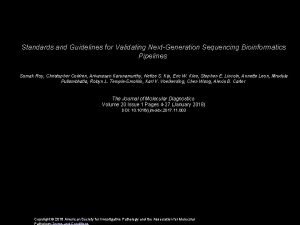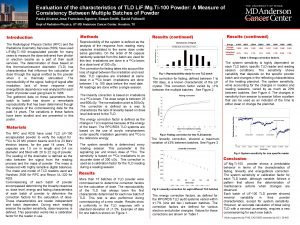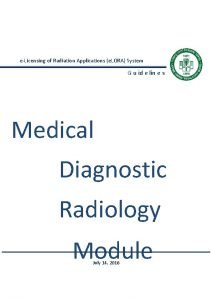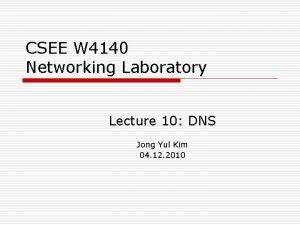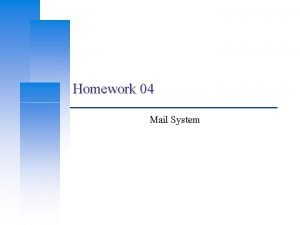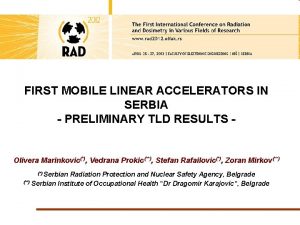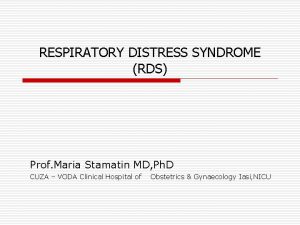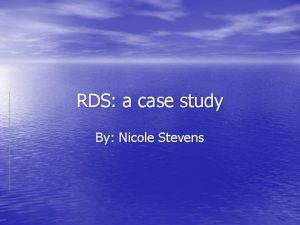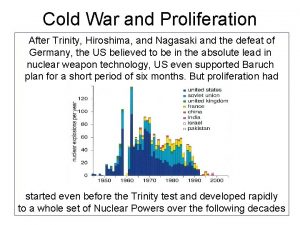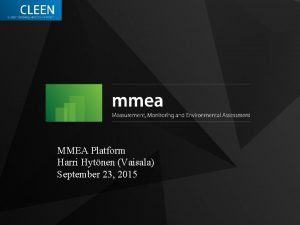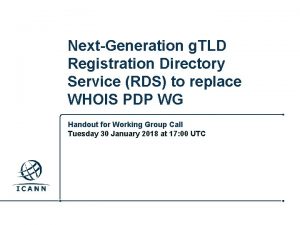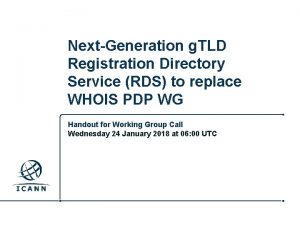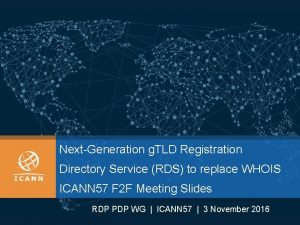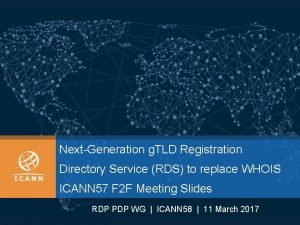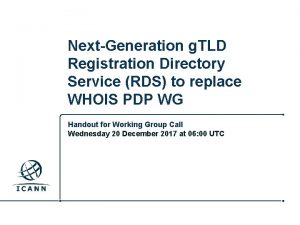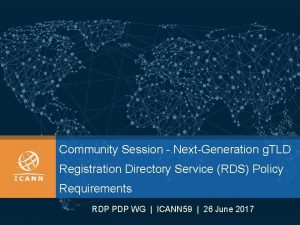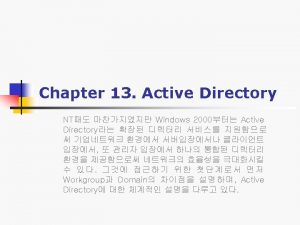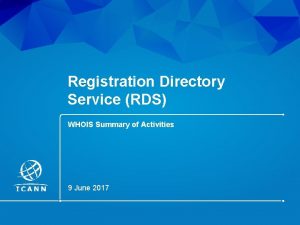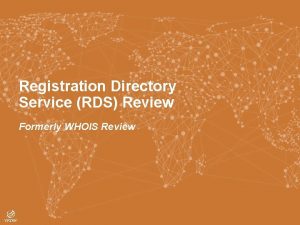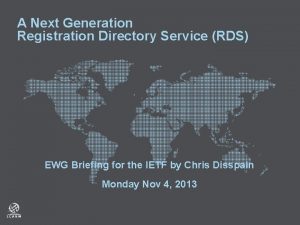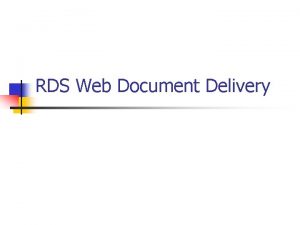NextGeneration g TLD Registration Directory Service RDS to
















- Slides: 16

Next-Generation g. TLD Registration Directory Service (RDS) to replace WHOIS PDP WG Handout for Working Group Call Tuesday 16 January 2018 at 17: 00 UTC

Proposed Agenda 1. Roll Call/SOI Updates 2. Review poll results from 9 January call 3. Deliberate on what makes any purpose legitimate for processing registration data a) Review examples of criteria and legitimate purposes b) What makes purposes already agreed upon (Tech Issue Resolution, DN Management) legitimate? c) Add to and refine list of possible criteria for what makes any purpose legitimate for processing registration data d) Formulate possible WG agreement(s) on criteria 4. Confirm action items and proposed decision points 5. Confirm next WG meeting: Wednesday, 24 January at 06: 00 UTC Meeting Materials: https: //community. icann. org/x/RABy. B |

2) Review poll results from 9 January call See Annotated Results: https: //community. icann. org/download/attachments/74580036/Annotat ed. Results-Poll-from-9 January. Call. pdf Q 2) Domain Name Certification Support for the previously-forged agreement has fallen from 84% to 67%, with a full 33% now arguing that DN Cert IS a legitimate purpose. Q 3) Criminal Activity/ DNS Abuse – Investigation More WG members (56%) explicitly stated that Investigation IS a legitimate purpose for collecting some data than those who believe that Investigation is NOT a legitimate purpose (approx 40%). After consideration of responses and comments providing rationale, the leadership team concluded that growing divergence may actually reflect differences in criteria that WG members are using to decide what constitutes a legitimate purpose… |

3) Deliberate on what makes any purpose legitimate for processing registration data Review some examples of criteria and legitimate purposes Does it support ICANN's mission? (see slide 12) Is it specific? Is it explained in a way that registrants can understand? Does it explain to registrants what their data will be used for? Is it necessary for the fulfilment of a contract? Other? See additional examples extracted from various source documents: https: //community. icann. org/download/attachments/74580036/Highlighted%2 0 examples%20 of%20 possible%20 legitimate%20 processing%20 of%20 registr ation%20 data%2016%20 Jan%2018%20 v 2. pdf? version=2&modification. Date =1516117855522&api=v 2 |

What makes purposes already agreed upon legitimate? WG Agreement 46 Technical Issue Resolution for issues associated with Domain Name Resolution is a legitimate purpose, based on the following definition: Information collected to enable contact of the relevant contacts to facilitate tracing, identification and resolution of incidents related to issues associated with domain name resolution by persons who are affected by such issues, or persons tasked (directly or indirectly) with the resolution of such issues on their behalf. WG Agreement 48 Domain Name Management is a legitimate purpose for collecting some registration data, based on the definition: Information collected to create a domain name registration, enabling management of the domain name registration, and ensuring that the domain registration records are under the control of the authorized party and that no unauthorized changes or transfers are made in the record. We had strong rough consensus on these so: What makes these purposes legitimate for processing registration data? |

Continue with agenda item 3 Add to and refine list of possible criteria for what makes any purpose legitimate for processing registration data i. Does it support ICANN's mission? ii. Is it specific? iii. Is it explained in a way that registrants can understand? iv. Does it explain to registrants what their data will be used for? v. Is it necessary for the fulfilment of a contract? Formulate possible WG agreement(s) on criteria |6

Confirm action items and decision points 16 January WG Call Meeting Materials: https: //community. icann. org/x/RABy. B Next call: Wednesday 24 January, 2018 at 06: 00 UTC |

DT definitions for each possible purpose Name Single-Sentence Definition Technical Issue Resolution Information collected to enable contact of the relevant contacts to facilitate tracing, identification and resolution of incidents related to services associated with the domain name by persons who are affected by such issues, or persons tasked (directly or indirectly) with the resolution of such issues on their behalf. Academic or Public Interest Research Information collected to enable use of registration data elements by researchers and other similar persons, as a source for academic or other public interest studies or research, relating either solely or in part to the use of the DNS. Domain Name Management Information collected to create a new domain name registration and ensuring that the domain registration records are under the control of the authorized party and that no unauthorized changes, transfers are made in the record. Individual Internet Use Collecting the required information of the registrant or relevant contact in the record to allow the internet user to contact or determine reputation of the domain name registration. |

DT definitions for each possible purpose Name Single-Sentence Definition Domain Name Certification Information collected by a certificate authority to enable contact between the registrant, or a technical or administrative representative of the registrant, to assist in verifying that the identity of the certificate applicant is the same as the entity that controls the domain name. Domain Name Purchase/Sale Information to enable contact between the registrant and third-party buyer to assist registrant in proving and exercising property interest in the domain name and thirdparty buyer in confirming the registrant's property interest and related merchantability. ICANN Contractual Enforcement Information accessed to enable ICANN Compliance to monitor and enforce contracted parties’ agreements with ICANN. Regulatory Enforcement Information accessed by regulatory entities to enable contact with the registrant to ensure compliance with applicable laws. |

DT definitions for each possible purpose Name Single-Sentence Definition Legal Actions Includes assisting certain parties (or their legal representatives, agents or service providers) to investigate and enforce civil and criminal laws, protect recognized legal rights, address online abuse or contractual compliance matters, or to assist parties defending against these kinds of activities, in each case with respect to all stages associated with such activities, including investigative stages; communications with registrants, registration authorities or hosting providers, or administrative or technical personnel relevant to the domain at issue; arbitrations; administrative proceedings; civil litigations (private or public); and criminal prosecutions. Criminal Activity/ DNS Abuse – Investigation Information to be made available to regulatory authorities, law enforcement, cybersecurity professionals, IT administrators, automated protection systems and other incident responders for the purpose of enabling identification of the nature of the registration and operation of a domain name linked to abuse and/or criminal activities to facilitate the eventual mitigation and resolution of the abuse identified: Domain metadata (registrar, registration date, nameservers, etc. ), Registrant contact information, Registrar contact Information, DNS contact, etc. . |

DT definitions for each possible purpose Name Single-Sentence Definition Criminal Activity/ DNS Abuse – Notification Information collected and made available for the purpose of enabling notification by regulatory authorities, law enforcement, cybersecurity professionals, IT administrators, automated protection systems and other incident responders of the appropriate party (registrant, providers of associated services, registrar, etc), of abuse linked to a certain domain name registration to facilitate the mitigation and resolution of the abuse identified: Registrant contact information, Registrar contact Information, DNS contact, etc. . Criminal Activity/ DNS Abuse – Reputation Information made available to organizations running automated protection systems for the purpose of enabling the establishment of reputation for a domain name to facilitate the provision of services and acceptance of communications from the domain name examined: Domain metadata (registrar, registration date, nameservers, etc. ), Registrant contact information, Registrar contact Information, DNS contact, etc. . |

ICANN’s Mission (As amended 1 October 2016) Section 1. 1. MISSION (a) The mission of the Internet Corporation for Assigned Names and Numbers ("ICANN") is to ensure the stable and secure operation of the Internet's unique identifier systems as described in this Section 1. 1(a) (the "Mission"). Specifically, ICANN: (i) Coordinates the allocation and assignment of names in the root zone of the Domain Name System ("DNS") and coordinates the development and implementation of policies concerning the registration of second-level domain names in generic top-level domains ("g. TLDs"). In this role, ICANN's scope is to coordinate the development and implementation of policies: • For which uniform or coordinated resolution is reasonably necessary to facilitate the openness, interoperability, resilience, security and/or stability of the DNS including, with respect to g. TLD registrars and registries, policies in the areas described in Annex G-1 and Annex G-2; and • That are developed through a bottom-up consensus-based multistakeholder process and designed to ensure the stable and secure operation of the Internet's unique names systems. • The issues, policies, procedures, and principles addressed in Annex G-1 and Annex G-2 with respect to g. TLD registrars and registries shall be deemed to be within ICANN's Mission. (…. . . ) See https: //www. icann. org/resources/pages/governance/bylaws-en/#article 1 for further details | 12

Annex G-1 of the ICANN Bylaws (As amended 1 October 2016) ANNEX G-1 The topics, issues, policies, procedures and principles referenced in Section 1. 1(a)(i) with respect to g. TLD registrars are: • issues for which uniform or coordinated resolution is reasonably necessary to facilitate interoperability, security and/or stability of the Internet, registrar services, registry services, or the DNS; • functional and performance specifications for the provision of registrar services; • registrar policies reasonably necessary to implement Consensus Policies relating to a g. TLD registry; • resolution of disputes regarding the registration of domain names (as opposed to the use of such domain names, but including where such policies take into account use of the domain names); or • restrictions on cross-ownership of registry operators and registrars or resellers and regulations and restrictions with respect to registrar and registry operations and the use of registry and registrar data in the event that a registry operator and a registrar or reseller are affiliated. Examples of the above include, without limitation: • principles for allocation of registered names in a TLD (e. g. , first-come/first-served, timely renewal, holding period after expiration); • prohibitions on warehousing of or speculation in domain names by registries or registrars; • reservation of registered names in a TLD that may not be registered initially or that may not be renewed due to reasons reasonably related to (i) avoidance of confusion among or misleading of users, (ii) intellectual property, or (iii) the technical management of the DNS or the Internet (e. g. , establishment of reservations of names from registration); • maintenance of and access to accurate and up-to-date information concerning registered names and name servers; • procedures to avoid disruptions of domain name registrations due to suspension or termination of operations by a registry operator or a registrar, including procedures for allocation of responsibility among continuing registrars of the registered names sponsored in a TLD by a registrar losing accreditation; and • the transfer of registration data upon a change in registrar sponsoring one or more registered names. | 13

Annex G-2 of the ICANN Bylaws (As amended 1 October 2016) ANNEX G-2 The topics, issues, policies, procedures and principles referenced in Section 1. 1(a)(i) with respect to g. TLD registries are: • issues for which uniform or coordinated resolution is reasonably necessary to facilitate interoperability, security and/or stability of the Internet or DNS; • functional and performance specifications for the provision of registry services; • security and stability of the registry database for a TLD; • registry policies reasonably necessary to implement Consensus Policies relating to registry operations or registrars; • resolution of disputes regarding the registration of domain names (as opposed to the use of such domain names); or • restrictions on cross-ownership of registry operators and registrars or registrar resellers and regulations and restrictions with respect to registry operations and the use of registry and registrar data in the event that a registry operator and a registrar or registrar reseller are affiliated. Examples of the above include, without limitation: • principles for allocation of registered names in a TLD (e. g. , first-come/first-served, timely renewal, holding period after expiration); • prohibitions on warehousing of or speculation in domain names by registries or registrars; • reservation of registered names in the TLD that may not be registered initially or that may not be renewed due to reasons reasonably related to (i) avoidance of confusion among or misleading of users, (ii) intellectual property, or (iii) the technical management of the DNS or the Internet (e. g. , establishment of reservations of names from registration); • maintenance of and access to accurate and up-to-date information concerning domain name registrations; and • procedures to avoid disruptions of domain name registrations due to suspension or termination of operations by a registry operator or a registrar, including procedures for allocation of responsibility for serving registered domain names in a TLD affected by such a suspension or termination. | 14

Example WHOIS Record From Registry Agreement Domain Name: EXAMPLE. TLD Domain ID: D 1234567 -TLD WHOIS Server: whois. example. tld Referral URL: http: //www. example. tld Updated Date: 2009 -05 -29 T 20: 13: 00 Z Creation Date: 2000 -10 -08 T 00: 45: 00 Z Registry Expiry Date: 2010 -10 -08 T 00: 44: 59 Z Sponsoring Registrar: EXAMPLE REGISTRAR LLC Sponsoring Registrar IANA ID: 5555555 Domain Status: client. Delete. Prohibited Domain Status: client. Renew. Prohibited Domain Status: client. Transfer. Prohibited Domain Status: server. Update. Prohibited Registrant ID: 5372808 -ERL Registrant Name: EXAMPLE REGISTRANT Registrant Organization: EXAMPLE ORGANIZATION Registrant Street: 123 EXAMPLE STREET Registrant City: ANYTOWN Registrant State/Province: AP Registrant Postal Code: A 1 A 1 A 1 Registrant Country: EX Registrant Phone: +1. 5555551212 Registrant Phone Ext: 1234 Registrant Fax: +1. 5555551213 Registrant Fax Ext: 4321 Registrant Email: EMAIL@EXAMPLE. TL D Admin ID: 5372809 -ERL Admin Name: EXAMPLE REGISTRANT ADMINISTRATIVE Admin Organization: EXAMPLE REGISTRANT ORGANIZATION Admin Street: 123 EXAMPLE STREET Admin City: ANYTOWN Admin State/Province: AP Admin Postal Code: A 1 A 1 A 1 Admin Country: EX Admin Phone: +1. 5555551212 Admin Phone Ext: 1234 Admin Fax: +1. 5555551213 Admin Fax Ext: Admin Email: EMAIL@EXAMPLE. TLD Tech ID: 5372811 -ERL Tech Name: EXAMPLE REGISTRAR TECHNICAL Tech Organization: EXAMPLE REGISTRAR LLC Tech Street: 123 EXAMPLE STREET Tech City: ANYTOWN Tech State/Province: AP Tech Postal Code: A 1 A 1 A 1 Tech Country: EX Tech Phone: +1. 1235551234 Tech Phone Ext: 1234 Tech Fax: +1. 5555551213 Tech Fax Ext: 93 Tech Email: EMAIL@EXAMPLE. TLD Name Server: NS 01. EXAMPLEREGISTRAR. TLD Name Server: NS 02. EXAMPLEREGISTRAR. TLD DNSSEC: signed. Delegation DNSSEC: unsigned >>> Last update of WHOIS database: 2009 -05 -29 T 20: 15: 00 Z <<< https: //newgtlds. icann. org/sites/default/files/agreement-approved-31 jul 17 -en. pdf | 15

Data Element Agreements for each Purpose Data Required For the following Legitimate Purposes Nameservers Technical Issue Resolution, Domain Name Management Domain Status Technical Issue Resolution, Domain Name Management Expiry Date and Time Technical Issue Resolution, Domain Name Management Creation Date Domain Name Management Updated Date Domain Name Management Sponsoring Registrar Technical Issue Resolution, Domain Name Management Registrant Contact(s) Technical Issue Resolution (if no Tech Contact is provided) Registrant Name Domain Name Management Registrant Organization Domain Name Management Registrant Email Domain Name Management Technical Contact(s) Technical Issue Resolution Administrative Contact Domain Name Management Table: Summary of Data Required and Collected for each Legitimate Purpose based on recent WG Agreements #47, #49 | 16
